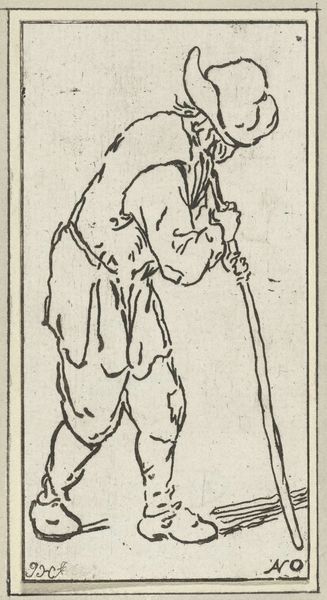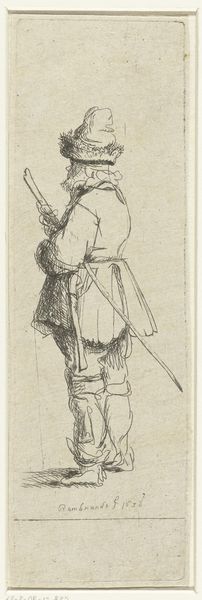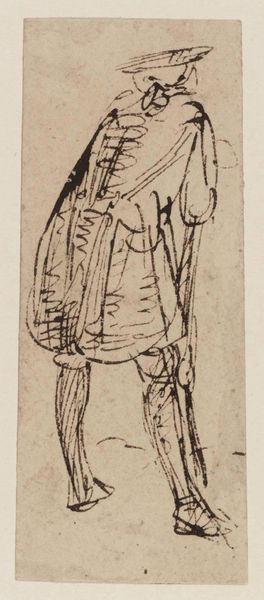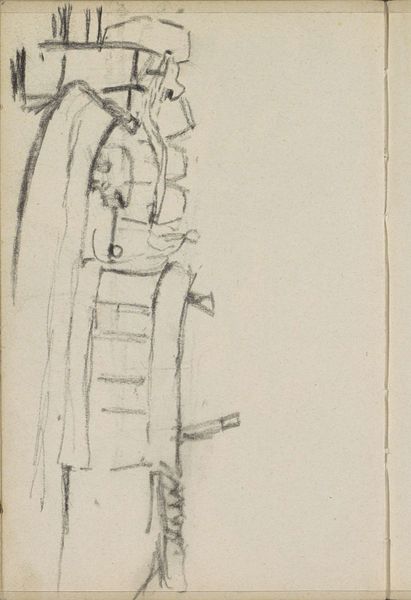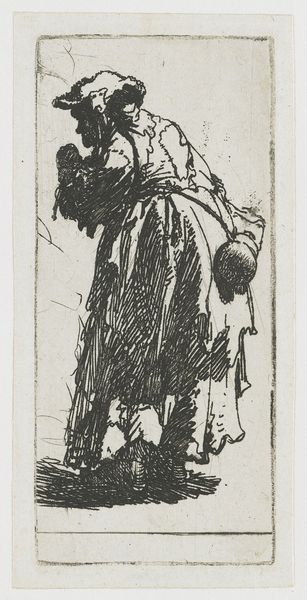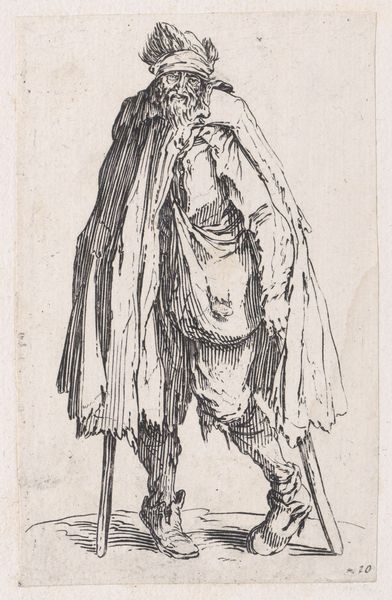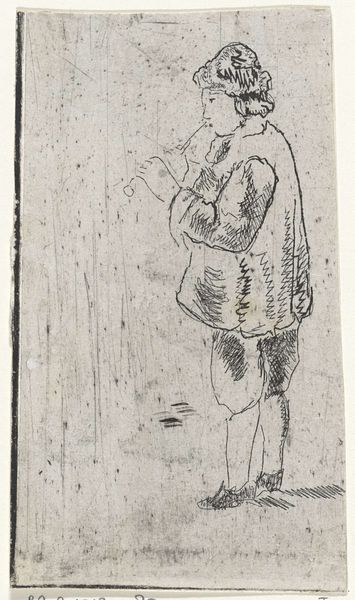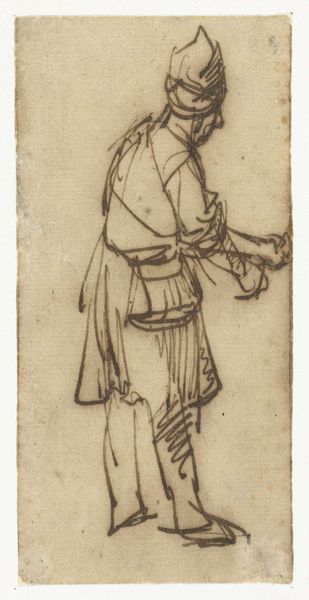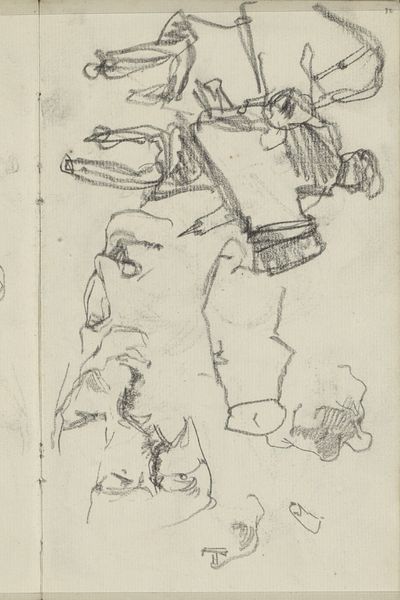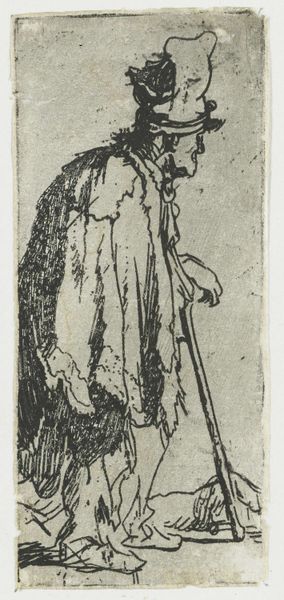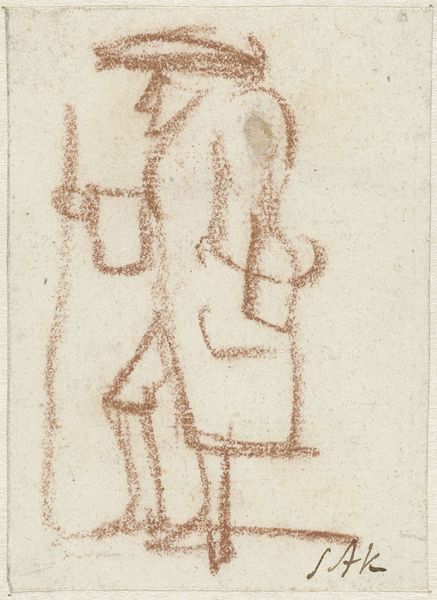
drawing, etching
#
portrait
#
drawing
#
ink drawing
#
baroque
#
pen illustration
#
pen sketch
#
etching
#
figuration
#
line
Dimensions: height 58 mm, width 21 mm
Copyright: Rijks Museum: Open Domain
Curator: Here we have Rembrandt van Rijn's "A Polander with a Stick," an etching created in 1631 and residing here at the Rijksmuseum. My first impression is of the sheer economy of line – so much implied with so little. Editor: It's intriguing, isn't it? Almost furtive in its hasty rendering. The stick, the feathered hat... they lend him a jaunty air, despite the rushed sketch aesthetic. The ink conveys a certain transience, as if he's about to vanish off the page. Curator: Exactly! Think of the cross-hatching – the way he suggests volume with these rapid, layered lines. It’s almost as if he’s capturing a fleeting moment. It’s that dynamism characteristic of the Baroque but distilled into its purest essence. Editor: And what’s the narrative? A wandering soldier? A dandy on his way somewhere interesting? The texture alone pulls me. How does Rembrandt make those flat marks on the paper feel almost three-dimensional? It's a remarkable manipulation of materiality! Curator: Well, consider that Rembrandt was deeply fascinated with people and particularly character studies. He was also preoccupied with experimenting with different characters from different locations, occupations, classes, and ethnic backgrounds. It's all there – costume, pose – adding to the figure's complex presence in just a few strokes. Editor: I see, it is as though Rembrandt understood the concept of "sprezzatura" long before Castiglione coined the phrase. What does the "stick" symbolize for you in terms of Rembrandt's technique and conceptual frame of reference? Curator: The stick grounds the figure and yet elevates the pose with a dramatic flair, but even it feels secondary to his technique. Every mark, even the seemingly casual ones, contributes to the overall effect. Rembrandt is masterful in transforming such meager mediums—etching in ink—into something emotionally stirring. Editor: And yet, while diving deeply into such formal construction reveals such masterful economy in service to that overall image of this singular "Polander" figure, I am left still desiring a larger space and surface where one might fully luxuriate into such an artful figuration of subject. Curator: Perhaps the tiny intimacy is the point. You want to lean in, to scrutinize.
Comments
rijksmuseum about 2 years ago
⋮
Initially, Rembrandt was fascinated above all by pathetic wretches compelled to beg for alms. Later, he also developed an interest in other colourful city folk, which he usually depicted in the same minuscule format. In these six etchings, he portrayed a quack in outmoded clothing, two Polish soldiers, two street musicians (an organ grinder and a fiddler) and a skater.
Join the conversation
Join millions of artists and users on Artera today and experience the ultimate creative platform.

